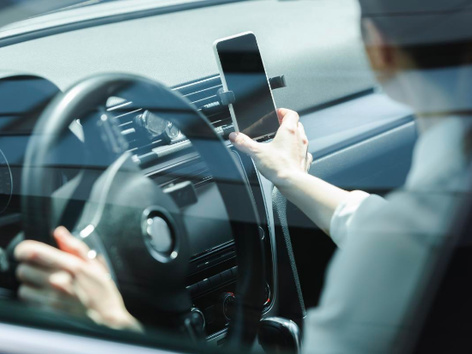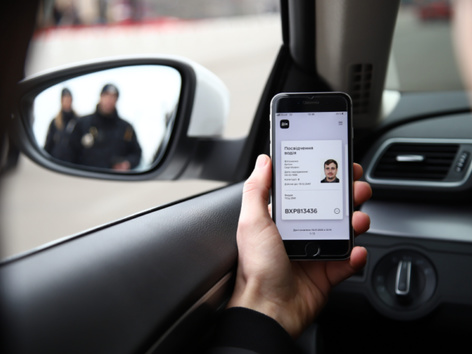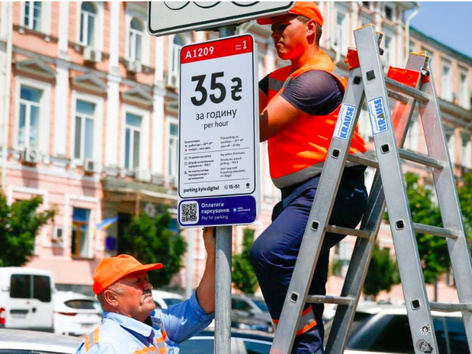

Issuing a policy Green card for traveling abroad by car
BUY
When crossing the state border by car, you must have the following documents with you:
• a driver's license that meets international standards;
• vehicle registration document (technical passport), which contains personal information in Cyrillic and Latin;
• identification mark of Ukraine on a car (UA);
• state license plate on the car. Keep in mind: if your car has an individual license plate, it will be considered valid only on the territory of Ukraine. You have the right to cross the border only with state license plates.
• a valid international insurance contract - a Green Card (according to Article 16 of the Law of Ukraine "On Compulsory Civil Liability Insurance of Land Vehicle Owners"). You can issue an insurance policy online by following the link.
If you are not the owner of a car, but are going to cross the border with it, you must have one of the following documents with you:
• power of attorney for the right to drive a car with a note on the owner's permission to travel abroad;
• temporary registration card for the right to drive a car;
• technical passport for the car. As you know, the "Diia" app has a car sharing function, which allows you to share your car's technical license with another person in a few clicks. This is convenient when the car is used by several family members (for example, husband and wife).
How to transfer a technical passport through Diia?
To share documents on a car through the program, you need to take several steps:
1. Update the service if necessary; In the "Services" section, find "Car sharing";
2. Select the desired menu item: share a car or send a request for a technical license to another person;
3. Choose the car you want to share;
4. Specify the period for which the technical passport of your car will be available in "Diia" for another person;
5. Enter your contact details or check them if they were automatically uploaded via BankID;
6. Specify the place of residence; 7. Check the application and send a request for the data of the person with whom you want to share the technical passport;
8. Show the QR code or send a link to the request to the person to whom the technical passport is transferred (if he is not near you).
9. The user confirms the request, adds contact data and signs the application using the program;
10. Sign the application using "Diia.Signature" and send it to the service center of the Ministry of Internal Affairs.
In a few minutes, the technical passport will appear in the other person's application.
Attention! If the owner of the car is abroad, a power of attorney for driving the car by a third person can be issued at the embassy/consulate of Ukraine or at a notary in the country of residence. Such a power of attorney must be apostilled, translated into Ukrainian and certified by a Ukrainian notary. The presence of the person for whom the power of attorney is issued is not mandatory.
Winter rules for European drivers. In which EU countries should you change tires with the onset of cold weather?
Ukrainian drivers are used to the annual process: with the onset of the first cold weather, you need to "shoe" your car with winter tires. The law does not have clearly established deadlines for when drivers must change wheels, and a developed system of fines for not having winter tires.
The Cabinet of Ministers of Ukraine was supposed to develop and approve the relevant rules in 2022, but the war got in the way. Therefore, this winter, Ukrainian drivers follow the usual rules: as soon as the average temperature drops to 7 degrees, it's time to install winter tires.
As we previously told in the
RBC-Ukraine article, there is no single law on changing wheels in European countries either. Each country regulates the rules independently, based on its geographical location and climate.
European countries where installation of winter tires is mandatory
In some European countries, at the level of law, there are clear deadlines for changing winter tires that are mandatory for all drivers.
Northern Europe
• Finland. All vehicles must be fitted with 3PMSF, POR or studded tires between 1 November and 31 March.
• Latvia, Estonia and Lithuania. The installation of M+S winter tires for vehicles weighing less than 3.5 t is mandatory between December 1 and March 1 in Latvia and Estonia, and between November 1 and April 1 in Lithuania.
• Norway, Sweden and Iceland. All vehicles weighing more than 3.5 tonnes must switch to winter tires between November 15 and March 31 in Norway, and between November 1 and April 14 in Sweden and Iceland.
Western Europe
• Austria. Moving around the country on winter tires is special between November 1 and April 15. To move on snowy and icy roads, you must use anti-skid chains and two drive axle tires. It is also noted that in case of non-compliance with these requirements, the driver faces a fine of 60 euros, and if he endangers other road users, the fine will be increased to 5,000 euros.
• Luxembourg. Installation of winter tires is mandatory between December 1 and March 31. At the same time, the speed of the vehicle on such tires should not exceed 60 km/h within the city and 90 km/h on the highway.
• France. In the mountainous regions of the country - in the Alps, the Pyrenees, the Vosges, the Jura Mountains and the Massif Central, all cars, without exception, must use SPMSF tires between November 1 and March 31. Failure to comply with this law may result in a fine of 135 euros.
Central Europe
• Germany. When traveling on ice, snow or sleet with ice, all vehicles must be equipped with tires marked M+S or have a mountain symbol with a snowflake. The law does not provide exact dates for the installation of winter tires, but fines from 60 euros are provided for driving a car on unsuitable tires in winter.
• Slovenia. Winter tires must be installed at least on the driving axle between November 15 and March 15.
• Czech Republic. Driving on winter tires is mandatory in appropriate road conditions or in areas with special signs between November 1 and March 31.
• Slovakia. Drivers of trucks weighing more than 3.5 tons must install M+S winter tires with a tread depth of at least 3 mm on the driving axle between November 15 and March 31.
South-Eastern and Southern Europe
• Montenegro. On roads marked by the Ministry of Public Order, winter tires or M+S marked tires are mandatory between November and April.
• Serbia. M+S marked tires with a minimum tread depth of 4 mm are mandatory between November and April.
• Croatia. Driving on winter tires is mandatory between November 15 and April 15.
• Bosnia and Herzegovina, Romania. Winter tires are mandatory for cars weighing more than 3.5 tons between November and April.
• Bulgaria. Cars must be equipped with winter rubber or tires with a tread depth of more than 4 mm between November 15 and March 1. Anti-skid chains must be in the car from November 1 to March 31.
• Italy. Winter tires are mandatory for only one province - South Tyrol, between October 15 and April 15.
In some regions of Europe, drivers are required to install anti-skid chains. This is usually regulated by appropriate road signs.
In certain countries, for example in Poland, Moldova or Switzerland, the installation of winter tires is not regulated by law, but there are relevant recommendations for the safety of road users.
Be aware that in some countries, it is illegal to install studded tires.
We will remind you! Previously, we wrote about the peculiarities of driving a car with Ukrainian license plates in the Czech Republic. You can familiarize yourself with the rules by following the
link.







